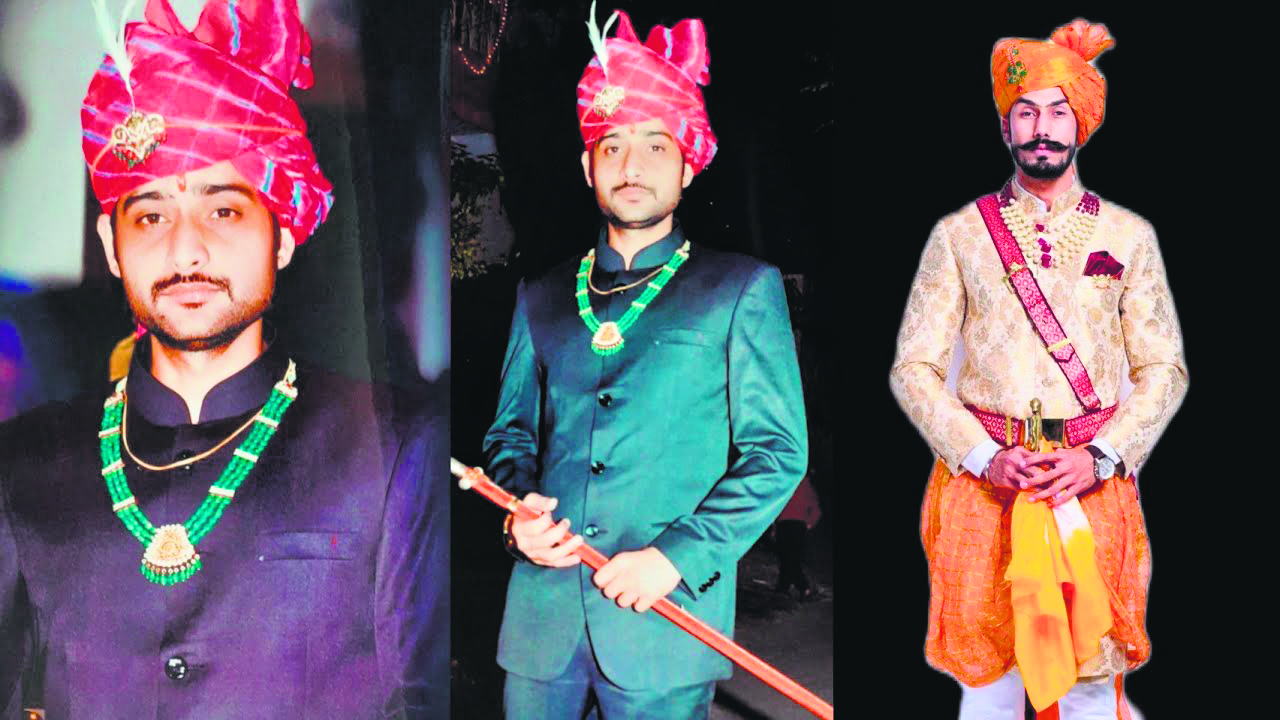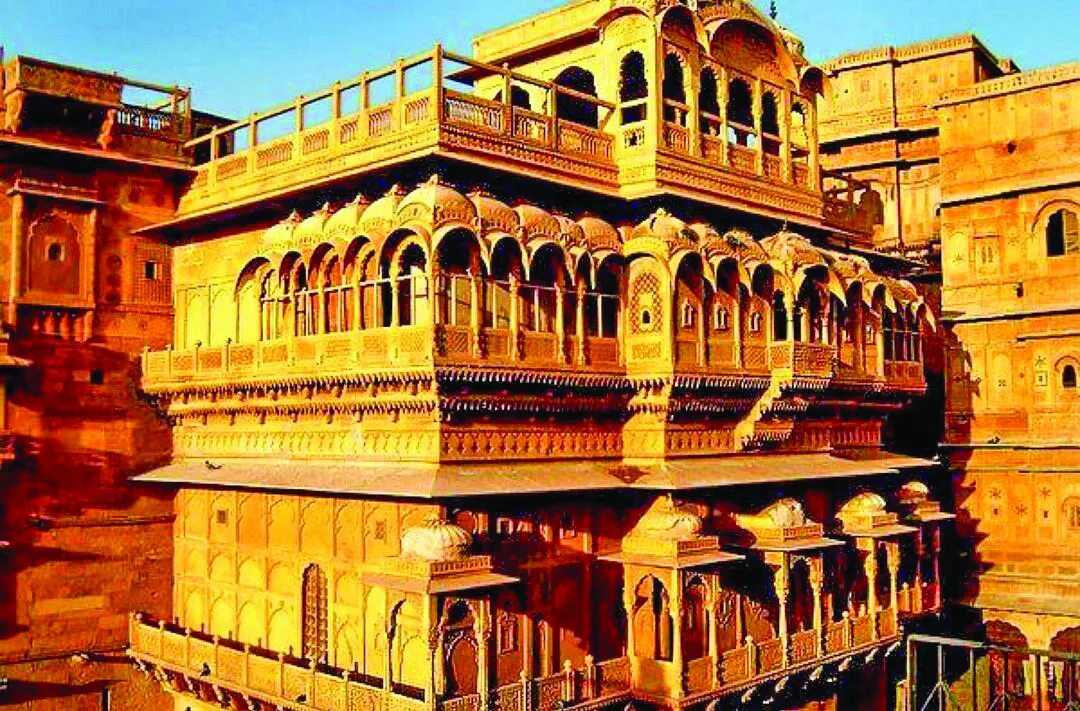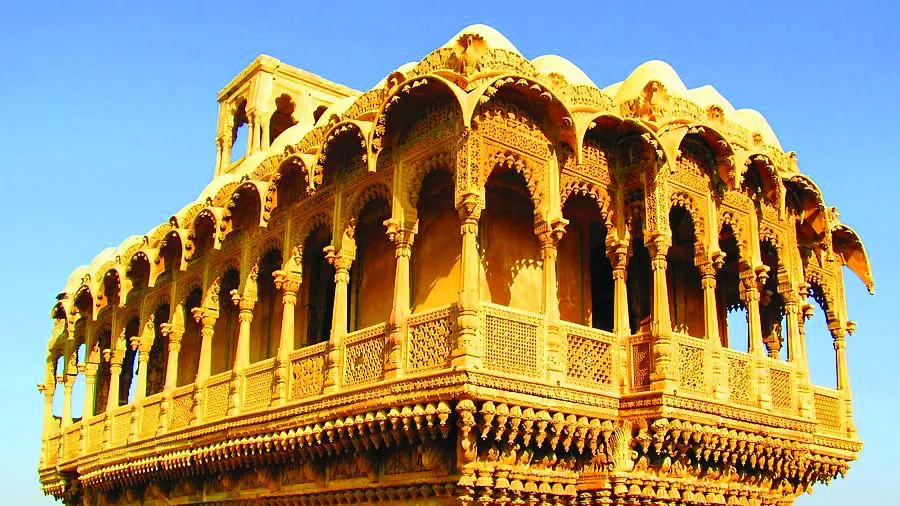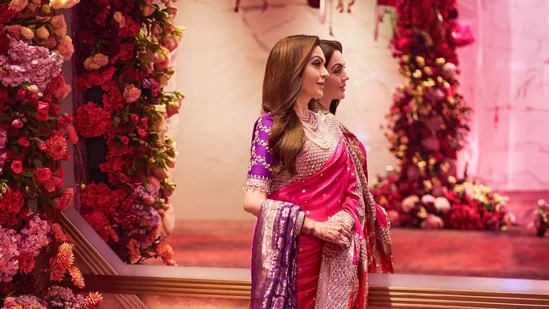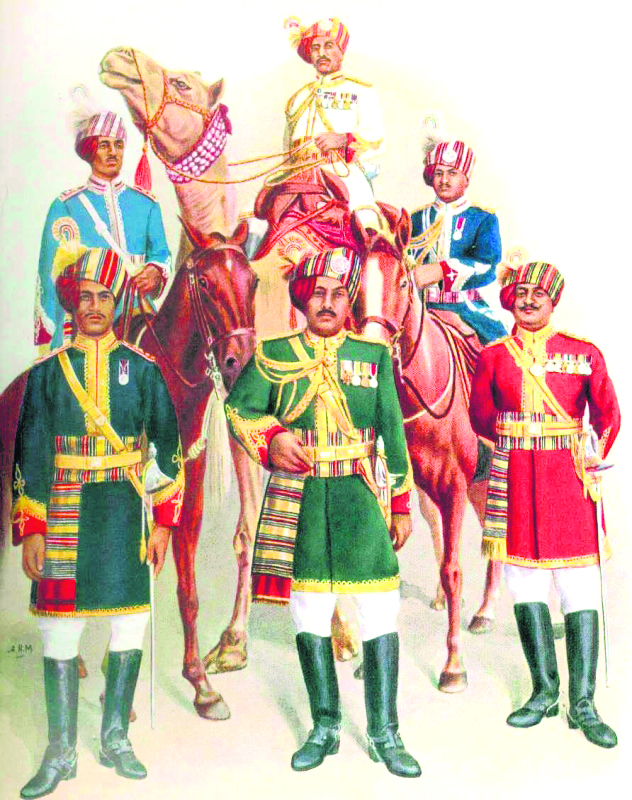The Rajputana dress, known as the Achkan, stands as an emblem of heritage and tradition within Rajasthan’s vibrant culture, offering a captivating glimpse into history through its intricate weaves and elaborate designs. Its evolution, spanning generations, reflects a blend of opulence and sophistication while encapsulating the essence of Rajput identity and valor.
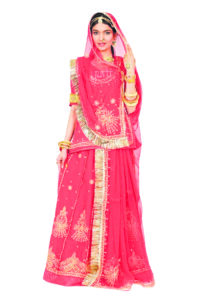
Essence and Evolution:
The Achkan, historically crafted from wool or cotton, signifies Rajputana’s artistic legacy. Its intricate embellishments, ranging from embroidery to sequins and ornate patterns, define its elegance. Typically seen in regal shades like blue or black, it emanates a sense of regality. The Rajputi Poshak, an embodiment of grace and tradition, symbolizes the heritage and cultural richness of Rajasthan’s Rajput community. This exquisite attire, with its intricate details and vibrant hues, transcends time, offering a window into the majestic history and valorous traditions of the Rajputana clans. Rooted in Rajasthani history, the Rajputi Poshak traces its origins to the royal courts of Rajasthan. Initially worn by Rajput nobility and royalty, this attire has evolved over centuries, adapting to changing trends while preserving its quintessential essence.
Lehenga or Ghaghara:
• A defining piece, the lehenga or ghaghara, represents the skirt, typically long and voluminous. Its intricate embroidery and vibrant colors reflect the cultural aesthetics of Rajasthan.
• The choli, a snug-fitting blouse, or the kanchli, a waist-length jacket, complements the ensemble. These pieces are adorned with elaborate embroidery and mirror work, enhancing their allure.
• The odhi or chunari, a long veil or scarf, beautifully drapes over the head and shoulders, adding grace and sophistication to the attire.
• Intricately designed jewelry, including borla (headpiece), nath (nose ring), bajubandh (armlets), and payal (anklets), complements the Rajputi Poshak, accentuating its grandeur.
Significance and Symbolism:
The Rajputi Poshak holds deep cultural significance, symbolizing the valor, pride, and traditions of the Rajput community. Each element of this attire, from its embroidery motifs to its colors, signifies heritage, marital status, and social standing.
Regional Variations:
While the essence of the Rajputi Poshak remains consistent, different regions within
Rajasthan exhibit their unique styles and variations. For instance:
• Mewar: Known for its vibrant colors and intricate mirror work.
• Marwar: Emphasizes simplicity with rich, contrasting colors.
• Shekhawati: Celebrates opulence with heavy embroidery and royal motifs.
Timelessness and Modern Adaptation:
Despite evolving fashion trends, the Rajputi Poshak retains its timeless appeal. Modern interpretations incorporate lighter fabrics and contemporary designs while preserving the traditional essence. Its adaptability makes it suitable for various occasions, from weddings to cultural events.
Heritage Preservation and Cultural Identity:
The Rajputi Poshak serves as a cultural emblem, keeping alive the rich heritage of Rajasthan. Its preservation and continued significance in Rajput society reinforce a sense of cultural identity and pride among the community.
Conclusion:
The Rajputi Poshak, with its intricate craftsmanship and symbolic significance, stands as a testament to Rajasthan’s cultural opulence and the Rajput community’s legacy. Its vibrant colors, ornate embroidery, and historical roots continue to fascinate and inspire, embodying an enduring legacy of tradition and grace in contemporary times. As a cherished attire representing heritage and cultural identity, the Rajputi Poshak remains an emblem of Rajasthan’s rich cultural tapestry.

